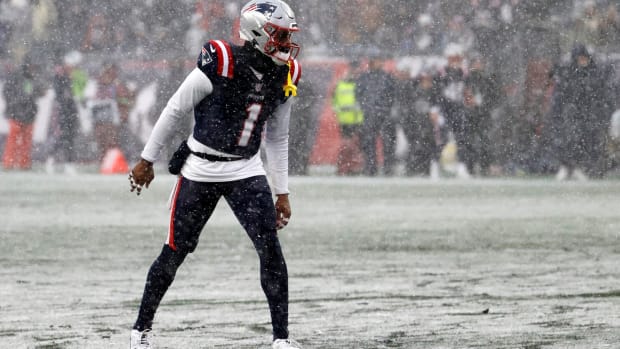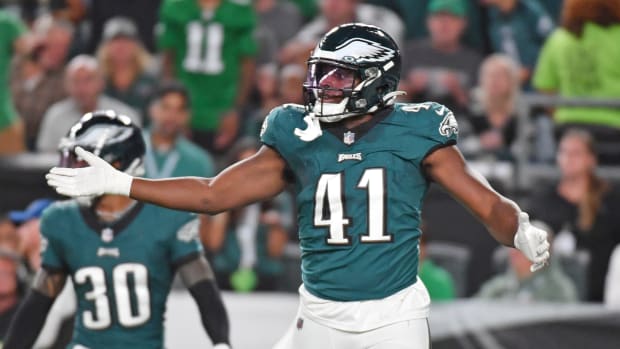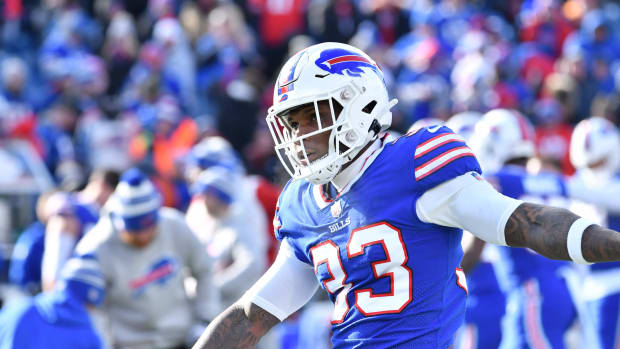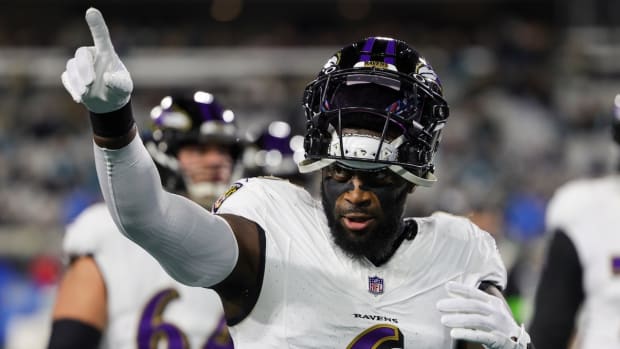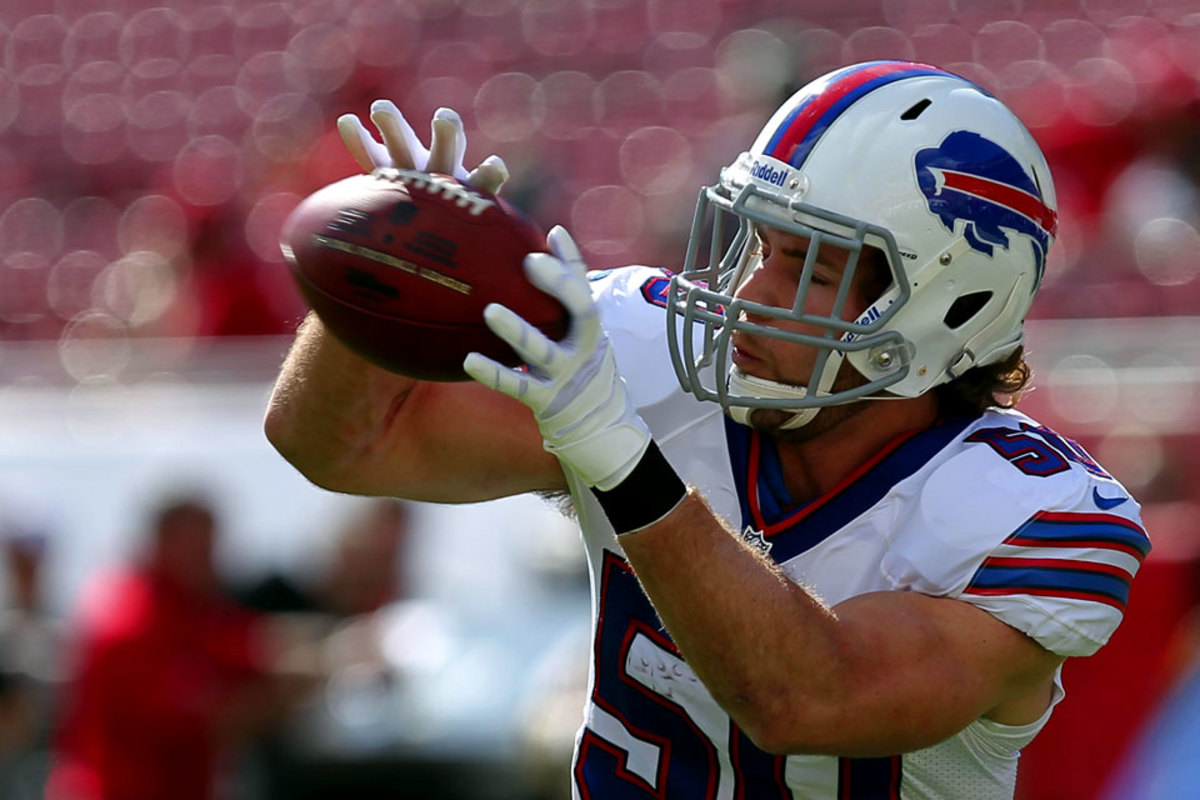
Trades, Tags, Salary Caps and Free Agency: Making Sense of the Offseason
At this time of year, with so much happening in the business of football, I keep many of the same questions are populating my email inbox and Twitter account. Here are a few popular ones, with my thoughts.
What was your reaction to the blockbuster trade of LeSean McCoy going to the Bills for Kiko Alonso?
My first reaction is that it appears more like a general-manager driven trade than a coach/general manager-driven trade. Coaches are usually short-term emotional actors rather than long-term planners, yet Kelly traded the better short-term option away in favor of the ascending player who should have better value in the long run. Kelly took a very “non-coach” approach, contrasted with his gusto-filled trade partner Rex Ryan.
My next reaction was a business one, wondering if Buffalo was going to take on the $10.25 million McCoy is due this year along with (nonguaranteed) salaries of $6.9 million and $7.6 million over the next two years. In stark contrast, Alonso (pictured atop page) is under contract the next two years at bargain numbers — $746,000 and $962,000 — with a restricted free agent year after that. The trade tells me that either Kelly has learned (perhaps from deposed general manager Howie Roseman) about being frugal or that he is clearing the decks for a major addition (or two or three) in free agency. We shall soon see.
Finally, this says a lot about running backs in the NFL. Even for the best of the best such as McCoy, it rarely ends well with their team. We may see three of the best running backs in the league in recent years — McCoy, DeMarco Murray and Adrian Peterson — join different teams this year. And of the thousands of tweets in the hours after the trade, there were scant few even wondering who would play running back for the Eagles; a sign of the times. Running backs really need a union of their own; their most productive years are spent making no money (college) or making fixed and reasonable wages (rookie contract). After that, teams are usually looking for an exit plan.
Let's hold off on judging this trade. Remember how the masses ridiculed the Browns for trading Trent Richardson for a first-round draft pick to Indianapolis, a trade the Colts now wish they had never made? As much as some pundits will criticize the Eagles on this deal, let’s watch the production of McCoy and Alonzo going over the next three years or so.
Can you explain the differences between the team cap, the overall cap and the adjusted cap?
Yes, welcome to some of the intricacies of Salary Cap 101, starting with figuring out what the cap number really is.
The NFL (finally) announced the 2015 team cap number of $143.28 million, the amount that every team must be under by March 10 and remain compliant throughout the season. It represents a healthy increase ($10 million) from the previous number for the second straight year, although this follows marginal increases in prior years since 2009.
The team cap is the number representing negotiable dollars for players, including salary, prorated bonus, LTBE (likely to be earned) incentive amounts, miscellaneous charges (dead money), etc. It does not include fully-funded benefits for players such as pension and health benefits, the minimum salary benefit, the Player Performance pool, the Injury Protection Benefit, etc. That amount per team is an additional $37.55 million, bringing the total 2015 team cap number to $180.83 million.
More NFL Offseason Coverage
Free Agents Ranked, 1-50Free Agents Ranked, 51-100No Prospect Is Under More Scrutiny Right Now Than Marcus MariotaThe Trade That Rocked the NFLOn Los Angeles, St. Louis and How It All Shakes Out
Beyond the team cap and the overall cap is each team’s adjusted cap number, calculated by adding each team’s rolled over unused 2014 cap room. The team with the most carryover was the Jaguars, who have the league’s highest adjusted cap, $168.5 million.
Regarding this adjusted cap number — stay with me here — it is important to note that teams’ 89% spending thresholds are based on the lower team cap number ($143.28 million) rather than the higher adjusted cap numbers.
Speaking of which…
Can you explain the team spending minimums and the report of 10 teams not spending enough after two years?
The mandatory minimum spending provision is a win for the players as it is 1) team-based, directed at the habitual under-spenders, and 2) calculated on a cash, not cap, basis. Cap is simply an accounting mechanism; the key is what teams are spending annually on a cash basis. On the negative side, however, my concern with the minimums is that 1) the threshold percentage is too low and 2) the period under review is too long.
I managed NFL team finances for ten years and know firsthand — with cyclical spending based on expiring contracts of key players — that it is hard not to spend 89% of the cap over a four-year term. As an example, let’s look at the team that spent the least over the last two years, the Panthers. Over the next two years, their most important players on offense and defense, Cam Newton and Luke Kuechly, will have drastically upgraded earnings, with Newton potentially earning more than $30 million of one-year earnings if he signs a new contract over that time. One or two players such as that can tilt a team toward the threshold, even after two years of acute under-spending.
We are now halfway through the initial four-year spending window (which runs through the 2013-2016 seasons) and ten teams, roughly a third of the league, have under-spent with no consequences for doing so. Were the spending review period two years rather than four, there would be consequences right now. Or most effectively, an annual year-by-year requirement of team spending would truly compel mandatory spending.
Speaking of spending…
Regarding the Cowboys, what is going to happen with Dez’s tag and DeMarco’s contract?
As predicted weeks ago, Dez Bryant presented an obvious franchise tag candidate: a game-changing talent still maturing as a person. The tag allows the Cowboys to provide very high earnings ($12.83 million) yet with no early money to Bryant, as the tag amount is paid in weekly paychecks starting in September.
While the tag was never in doubt, the question to me is whether the tag is 1) a placeholder for further negotiations before the July 15th deadline, or 2) a yearlong strategy to be revisited next year. Time will tell.
Further complicating negotiations with Bryant (and Murray) are recent team-friendly Cowboys contracts — such as Tyron Smith’s ten year deal with limited guarantees — now held up as precedent. With the agent and player community well aware of the pitfalls of that contract, neither player will agree to that kind of term or structure.
As for Murray, the Cowboys have clearly prioritized the receiver over the runner. Murray now joins a growing list at running back that includes Mark Ingram, Justin Forsett, Ryan Matthews and the recently released Reggie Bush, Steven Jackson and DeAngelo Williams. I may be soon writing another “devaluation of the running back” column.
Speaking of which…
Do you think it will be an active free-agent market this year?
I think it will be the same as it always is: there will be 10-15 “golden ticket” winners, such as Ndamukong Suh, Randall Cobb, Jeremy Maclin and Devin McCourty, in the opening hours of free agency when “the stupid money” is spent.
The question is, How what will the competition be for robust contracts? And how long before players start racing to find seats at the table and the money runs out. In recent years, this “musical chairs” phase happens within two to three days after the start of free agency. Teams are getting smarter and looking for more bargains, and more than ever they’re asking, “Why is this guy on the market in the first place?”
What did you think of the Dolphins placing the transition tag on Charles Clay?
Although applying this tag does not return compensation if an incumbent team does not match, I think the transition tag is an effective and underutilized tool. I used it on a tight end as well, applying it to Bubba Franks in Green Bay years ago. In that case, I could not see eye to eye with the agent on the proper level of compensation for Franks, so we agreed to let the marketplace decide. If Franks had the value that his agent thought he did, we would be presented with an offer outside of the range we were discussing (it didn’t happen though). This may be exactly the situation going on in Miami with Clay.
What did you think of the Adrian Peterson decision and what happens now with him and the Vikings?
Judge Doty gave the NFL the same message regarding Adrian Peterson that Judge Jones gave regarding Ray Rice: the NFL cannot apply its new “get tough” domestic discipline on old conduct. The Rice and Peterson decisions bode well for Greg Hardy and others whose misconduct occurred in the pre-September 8 NFL (the day TMZ released the Ray Rice elevator video). Meanwhile, the NFL is appealing the decision to the Eighth Circuit — a process that will take months — to protect the CBA process and players bypassing it to go to court.
I do think that even as they lick their legal wounds, the NFL feels it accomplished what may have been its primary goal: with outrage brewing and sponsors braying, they kept Ray Rice, Adrian Peterson and Greg Hardy off the field in 2014.
As for Peterson continuing with the Vikings, I just don’t see it. He and agent Ben Dogra have had issues with the team stemming from 1) when he was seen as radioactive and hastily put on the commissioner’s exempt list in September, albeit with full pay, and 2) when he pled to a misdemeanor in November and saw the Vikings’ conspicuous silence in hiding behind the NFL rather than pursuing reinstatement possibilities. Yes, the Vikings’ coaches and management are saying nice things about Peterson now, although it is too little too late from his view. We will see.
You have spoken highly of A.J. Hawk, who was released last week. Can you share more?
As a front office executive, one tries to be neutral and detached, but we all have favorite players. A.J. was one of mine, and many others’. He endeared himself to everyone with the team and was a particular favorite of the backroom guys: trainers, equipment staff, strength and conditioning staff, security, etc. And he took it upon himself to pursue outside interests; even starting a podcast this year, with guests (including me) from all walks of life.
I remember the day A.J, was drafted, fifth overall, in 2006. He flew in immediately for the press conference and, in the time between meeting the media and catching his flight back to Columbus, toured a few homes with a realtor and bought one (a few doors down from me). I also remember the morning he signed his rookie contract, arriving at my office at 7 a.m. drenched in sweat: he had to get a workout in before he signed. His work ethic has always been top-notch.
A.J. had a nine-year run in Green Bay, and people in the organization will miss him far more than outsiders know. Whether he continues to play or not, he is someone I know who will always be successful in whatever he chooses.
Follow The MMQB on Facebook, Twitter and Instagram.
[widget widget_name="SI Newsletter Widget”]







































